3 big reasons why every leader should invest in a 360° feedback analysis
Research indicates that as leaders rise through the ranks of their organizations, they tend to receive less feedback about themselves and their performance.
#1 - A 360° inventory solves this problem and provides a confidential way for those above, below, and alongside a leader to provide multi-dimensional feedback about their unique leadership or behavioral style.
#2 - It also creates an opportunity for a leader to test their views of themselves, discover their strengths, and become aware of blind spots in their working relationships.
According to Forbes, more than 85% of all Fortune 500 companies use the 360° feedback process as a cornerstone of their overall leadership development process.
At the Strategic Mentoring Group, we utilize a 360° assessment framework to assess the strength of leaders across six unique components of strategic influence.
These components represent six focus areas (or competencies) that the SMG emphasizes, teaches, and discusses with its clients.
Personal Leadership: The art and practice of effectively leading & managing yourself.
Character Formation: The development of a clear set of personal values that govern & guide one's conduct.
Faith Integration: Learning to invite God to the table & integrate a biblical faith in all areas of life and leadership.
Overcoming Stress & Building Resilience: Uncovering a pathway to well-being & strengthening one's ability to navigate life's challenges.
Making Decisions & Navigating Change: Learning how to make critical choices & effectively transition from one season to the next.
Empathetic Presence: Developing the relational skills needed to cultivate meaningful connections with others.
work in the modern world has changed
The context of work in the twenty-first century demands that we constantly adjust, pivot, and renew our focus. The business environment of the modern world is defined by great change and disruption. Therefore, to lead well and maintain our sense of purpose, we must “lean into the moment” and embrace the needs of the future. This forces us to take a leadership stance defined by continuous personal growth.
Amongst all the demands of modern life and leadership, we are often tempted to switch our personal growth and development to autopilot.
The truth is, however, that growth does not occur on autopilot. It occurs in the context of intentionality, strategic action, and relational support.
This means that we must grow more tactical in our approach to personal and professional development. It also means we must cultivate the supporting and guiding relationships we need to grow from one level to the next.
As you work in your job from day to day, it’s important to stay focused on your future development as a person. This leads us to the third big reason why every leader should invest in a 360° feedback process:
#3 - The ultimate purpose of 360° feedback is to inform and guide the development of a strategic growth plan that leads us closer to our ideal self.
For many people, when they read their 360° report, many feelings or reactions come to the surface - some positive and others a bit negative. Through it all, however, it is important to attune to your immediate gut reaction. This can be an accurate indicator of how we perceive our results.
These initial feelings should be embraced, but at some point, we need to get past them to see the data points for what they represent.
Ultimately, we should pay attention to themes and patterns in the feedback. If a particular tendency is emphasized by multiple raters or revealed in multiple sections of the report, it likely represents a repeated pattern of behavior.
These patterns, if positive, can represent an area of strength. If the pattern is negatively perceived by others, it may represent an area of needed improvement or deficit.
At some points, you may believe that other people’s perceptions of you are incorrect - that your raters neither understand your job(s) nor the demands and constraints you must work with - and you may even be right. Unfortunately, in this case, being right is not worth much. The purpose of a 360° Feedback Analysis is to reflect the effect of your influence on others, not your intent. A question you may need to ask yourself is:
“What am I doing that causes people to see me differently than I see myself?”
Often, the total scope of a person’s influence is a combination of their strengths and deficits.
Our strengths represent areas of natural proficiency that do not take much effort to develop or cultivate. They may also arise out of areas of deep experience or continued practice.
On the flip side, our deficits are areas of proficiency that do not come naturally to us or align with our innate temperament, personality, or communication style. This means that to develop or cultivate areas of deficit, we must invest time, effort, and hard work.
Sometimes, we are unaware that our deficits exist. We may not see them, but they are there and act as interpersonal blind spots. In some cases, they are connected to ignored or internalized insecurities. Even though we may not see them or be aware of their impact on our influence, the people around us are.
To develop the quotient of our influence in any area, we must have sufficient levels of relational support, guided assessment, and thoughtful feedback. For many people, however, receiving honest feedback about their behavior or performance can be an anxiety-producing experience.
For many employees, the only time they receive feedback is when the time comes for a salary or performance review. These forms of workplace feedback are often given with the intent of appraisal - which tends to place a certain level of assigned value or judgment on a person. This style of giving feedback carries a negative connotation and does little to support a person’s growth over the long term.
A better way to give, receive, and perceive feedback is with the intent to support a person’s future development. This helps people lower their defenses and “take the gloves off” in feedback-sharing environments.
To step into a feedback-sharing environment knowing that everyone present wants you to succeed produces an authentic desire to listen and embrace what is shared. When you complete a 360° Feedback Analysis with the SMG, we will help you learn how to view outside feedback as an ally rather than an enemy.
how does the process work?
During the 360° feedback process, the participant (the person receiving the feedback) and a group of raters (those providing feedback) answer specific questions about the participant’s development across six components of strategic influence.
This process aims to establish a baseline of the participant’s self-awareness and then compare that baseline with a total of four other individuals who work above, below, and alongside them in their organization, everyday work, or career.
To begin, the participant will complete a self-assessment to serve as a baseline in the final report.
Then, each of the four raters will anonymously answer the same assessment but with the participant in mind. Once all assessments are completed, the responses are aggregated into a single comprehensive report.
what should I do with my final report?
We encourage you to discuss your results with a certified mentor or coach trained to make the best use of 360° development tools. Our SMG Strategic Mentors will help you understand your results and help you create a personal development action plan.
In some cases, your results may surprise you. In other cases, they may confirm what you already know about yourself. As you review your results, stay focused on the “big picture” of your personal and professional development. Don’t get stuck on a single part or point of this report. Often, growth is an incremental, step-by-step process. Your goal should be to leverage your results to make the best use of future opportunities for advancement.

